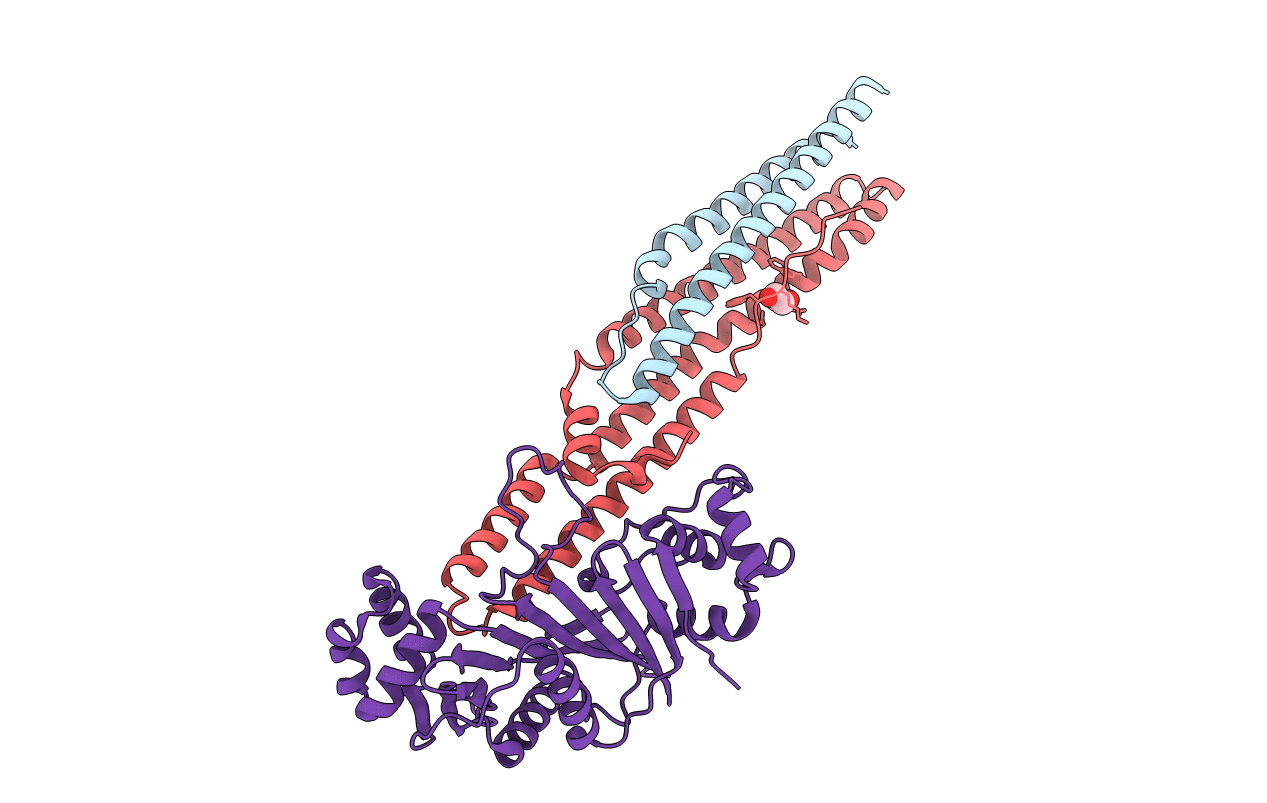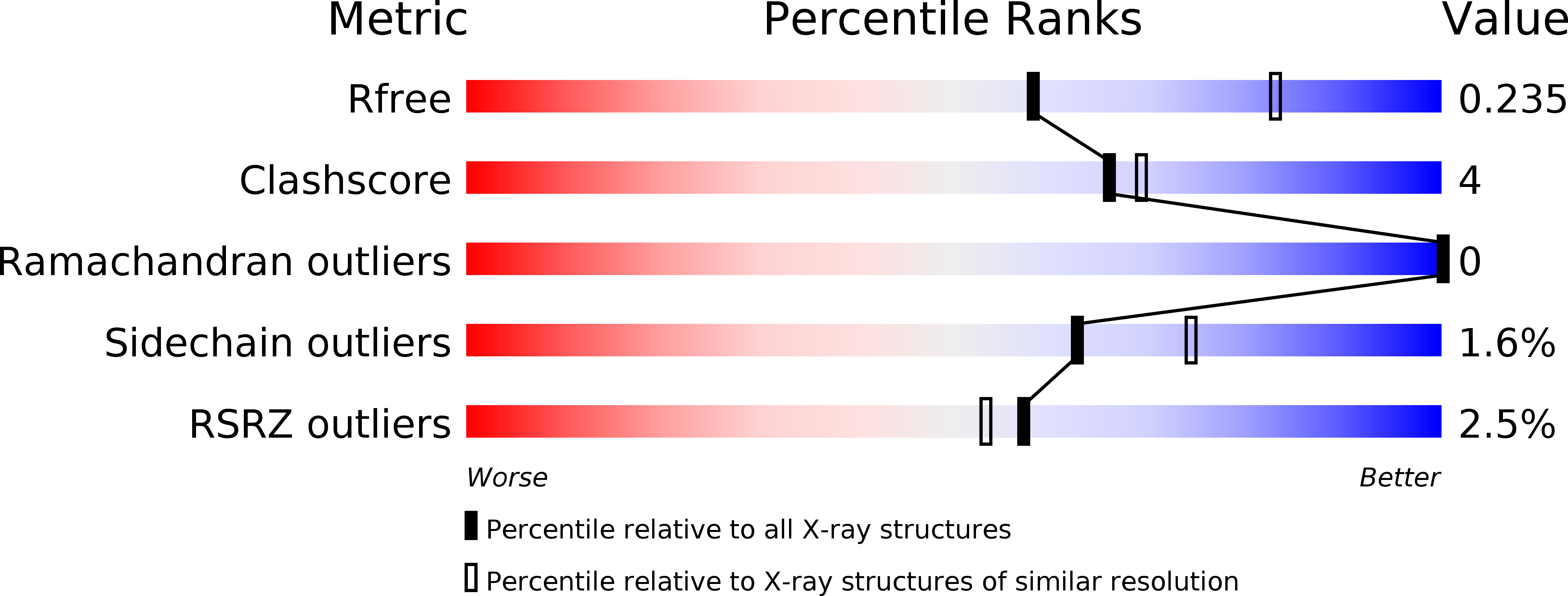
Deposition Date
2014-08-14
Release Date
2014-10-01
Last Version Date
2023-09-27
Entry Detail
PDB ID:
4W4L
Keywords:
Title:
Crystal structure of EspG5 in complex with PE25 and PPE41 from the ESX-5 type VII secretion system of M. tuberculosis
Biological Source:
Source Organism:
Mycobacterium tuberculosis (Taxon ID: 652616)
Host Organism:
Method Details:
Experimental Method:
Resolution:
2.45 Å
R-Value Free:
0.22
R-Value Work:
0.20
R-Value Observed:
0.20
Space Group:
P 61 2 2


